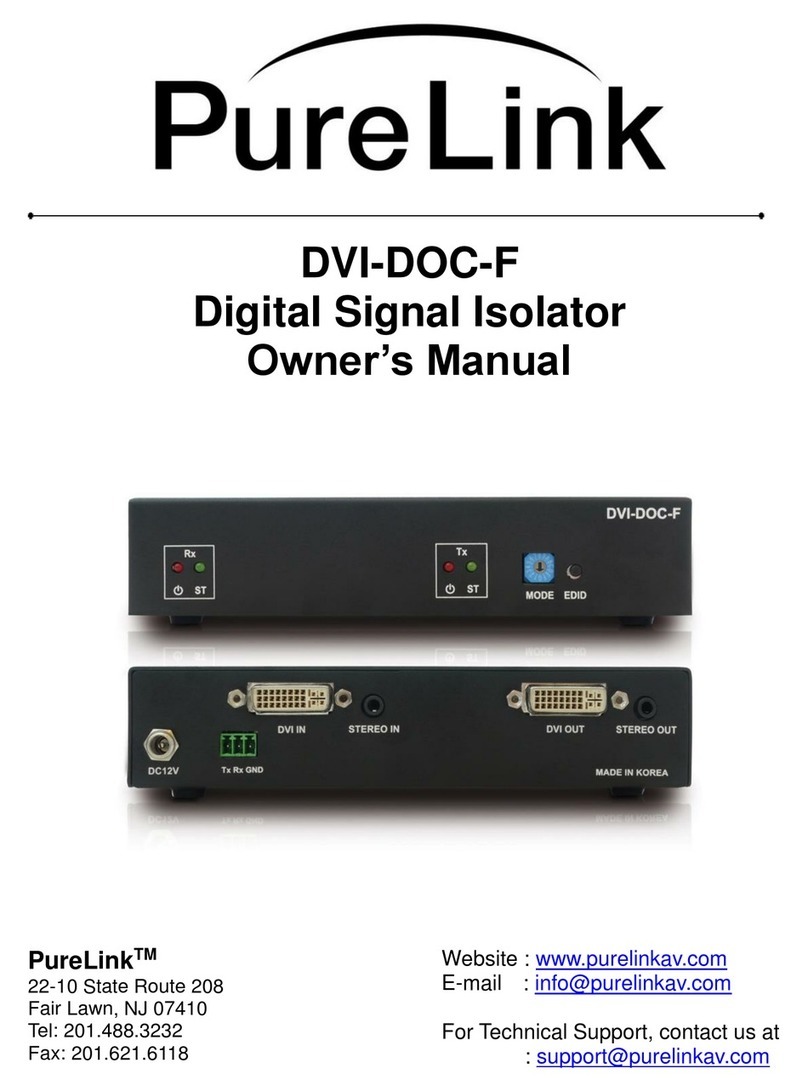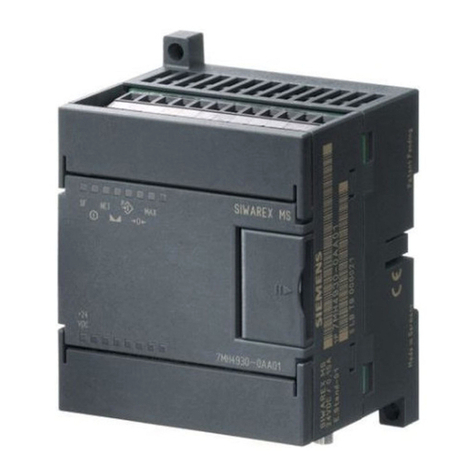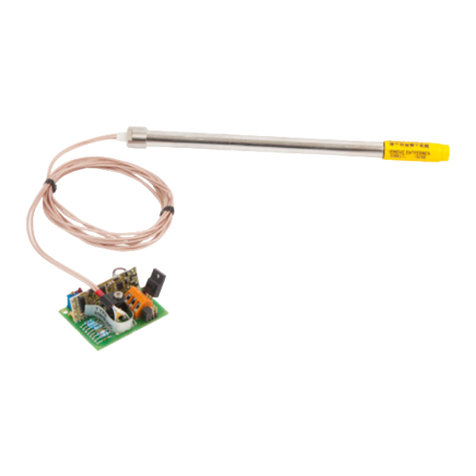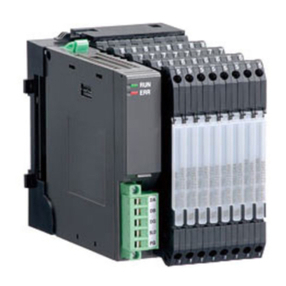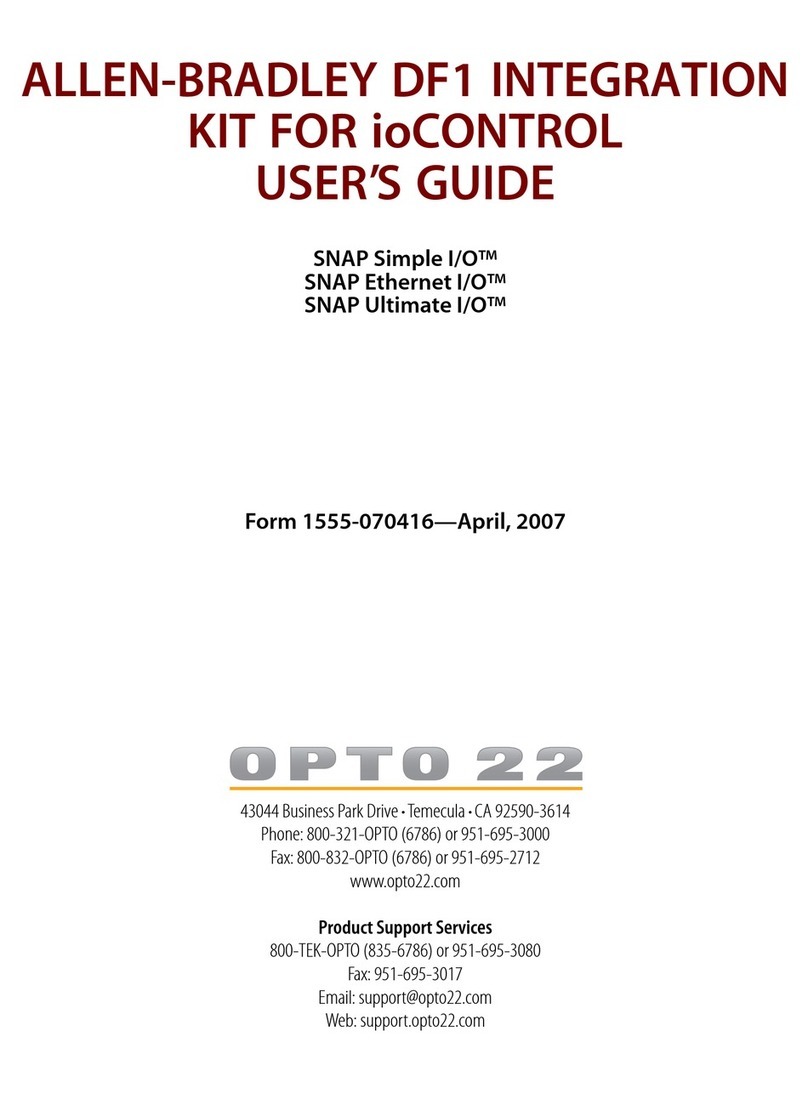Hivertec CPD Board Series User manual

..

This manualis for the boards listed below.
PCI
HPCI-
CPD532
HPCI-
CPD534
HPCI-
CPD508
HPCI-
CPD578
HPCI-
CPD574Nr1
HPCI-
CPD578Nr1
HPCI-
CPD553r1
PCI Express
HPCIe-
CPD632
HPCIe-
CPD674Nr1
HPCIe-
CPD678Nr1
HPCIe-
NCB674N
HPCIe-
NCB674N(1)
ISA
HPC-
CPD234
HPC-
CPD278
PC/104
HPC104-
CPD132
PC104D
HP104D-
CPD364
USB
HUSB-
CPD434v2
HUSB-
CPD434U
CompuctPCI
HCPCI-
CPD734
HCPCI-
CPD738
It is prohibitedto reprint or copy allor any partof this manual or programswithout prior writtenpermission.
Thecontentsof thismanualaresubjecttochangewithoutnoticetoenable improvementstobemade.
Please notify us -- or your sales representative if you havepurchased our products via your salesrepresentative -- for
this product ifyoufindany concerns withthecontentsof this manual.
Windows is aregistered trademark of Microsoft Corporation intheUnitedStates of America and other countries.
Othercompanyand productnames arethetrademarks or registeredtrademarks oftheirrespectivecompanies.
HivertecInc.
1-8-11Shin-Ohashi, Koto-Ku, Tokyo 135-0007,Japan
Mitsuiseimei Shin-OhashiBldg.
TEL+81-3-3846-3801
FAX +81-3-3846-3773
sales@hivertec.co.jp
Revision 5.52 Feb 4, 2020 released
Copyright HivertecInc.

Table of Contents
◼Please read first.........................................................................................................................................1
◼Extent of Warranty...............................................................................................................................1
◼Limitations to Liability ..........................................................................................................................1
◼Important Safety Instructions ...............................................................................................................1
◼Authorized For................................................................................................................................2
◼Transportation and Installation ........................................................................................................2
◼Wiring.............................................................................................................................................2
◼Trial and Sample Program (Getting started).....................................................................................3
◼OSs Supported by “Getting started”.................................................................................................3
◼Trial Operation and Tuning..............................................................................................................4
◼Disposal .........................................................................................................................................4
◼Manual Configuration of the CPD Series .........................................................................................5
◼Terms and Names appearing in this Manual ........................................................................................6
1. Introduction................................................................................................................................................7
1.1 Contents of This Manual......................................................................................................................7
1.2 Axes Names........................................................................................................................................8
1.3 Common Specifications.......................................................................................................................9
1.4 Functional Comparison......................................................................................................................10
1.4.1 Servo I/F..................................................................................................................................10
1.4.2 Machine I/F..............................................................................................................................11
1.4.3 Comparators............................................................................................................................12
1.4.4 General-purpose DIO and others..............................................................................................13
1.5 Axis Operation Functions...................................................................................................................14
1.5.1 Combination operations between axes......................................................................................14
1.6 Example of Connection Configuration................................................................................................15
1.7 Bundled Software..............................................................................................................................15
2. Installing the Device Driver.......................................................................................................................16
2.1 PCI and CompuctPCI Products..........................................................................................................16
2.1.1 With Windows 7 or later (64bit).................................................................................................16
2.1.2 With Windows 7 or later (32bit).................................................................................................16
2.1.3 With Windows XP.....................................................................................................................18
2.1.4 With Windows 2000..................................................................................................................19
2.1.5 With Windows NT 4.0...............................................................................................................19
2.1.6 With Windows 98SE.................................................................................................................19
2.1.7 Uninstalling from Windows 7 or later.........................................................................................19
2.1.8 Uninstalling from Windows XP..................................................................................................19
2.2 PCI Express Products (HPCIe-CPD674N/678N) ................................................................................20
2.2.1 With Windows 7 or later (64bit).................................................................................................20
2.2.2 With Windows 7 or later (32bit).................................................................................................21
2.2.3 Uninstalling from Windows 7 or later.........................................................................................22
2.3 PCI Express Products (HPCIe-NCB674N and NCB674N(1)).............................................................. 22
2.4 ISA and PC/104 Products.................................................................................................................. 23
2.4.1 With Windows XP and 2000 .....................................................................................................23
2.4.2 With Windows NT 4.0...............................................................................................................23
Please be sure to read the "Please read first" section
carefully before using the product.

2.4.3 With Windows 98 SE................................................................................................................23
2.4.4 Uninstallation ...........................................................................................................................23
2.5 USB Products....................................................................................................................................24
2.5.1 With Windows 10 (64bit)...........................................................................................................24
2.5.2 With Windows 10 (32bit)...........................................................................................................24
2.5.3 With Windows 7 or later (64bit).................................................................................................24
2.5.4 With Windows 7 or later (32bit).................................................................................................25
2.5.5 With Windows XP.....................................................................................................................25
2.5.6 With Windows 2000..................................................................................................................25
2.5.7 With Windows 98SE.................................................................................................................25
2.5.8 Uninstallation with Windows 7 or later....................................................................................... 26
2.5.9 Uninstallation with Windows XP / 2000 / 98SE..........................................................................27
3. Getting Started.........................................................................................................................................28
3.1 HPCI-CPD532/534/508/574N/578N/553, HCPCI-CPD734/738, HPCIe-CPD674N/678N.....................29
3.1.1 Operation confirmation screen..................................................................................................29
3.1.2 Configuration screen................................................................................................................ 33
3.2 HPCIe-NCB674N and HPCIe-NCB674N(1)........................................................................................34
3.3 HUSB-CPD434v2HUSB-CPD434U .................................................................................................35
3.3.1 4.8.1. ”Let’s try to move” Operation Window ...........................................................................35
3.3.2 4.8.2. “Let’s-Try-to-Move” Settings Window ............................................................................38
4. Trial Operation.........................................................................................................................................41
4.1 Procedure.........................................................................................................................................41
4.2 Boardchecker (Type: HCHK-CPDv1) .................................................................................................41
4.2.1 Overview..................................................................................................................................42
4.2.2 Option at purchase...................................................................................................................42
4.2.3 Basic specification....................................................................................................................42
4.2.4 Connection configuration.......................................................................................................... 43
4.2.5 Interface diagram (for 1 axis)....................................................................................................45
4.2.6 Dimensions..............................................................................................................................45
4.2.7 Connector signal list (HCHK-CPDv1 side).................................................................................46
4.2.8 Switch description ....................................................................................................................48
5. Glossary ..................................................................................................................................................49
5.1 Terms Used in Motion Control ...........................................................................................................49
5.1.1 Configuration example of motion control system .......................................................................49
5.1.2 Pulse command and motor rotation...........................................................................................49
5.1.3 Control axes and their axis name..............................................................................................50
5.1.4 Control command unit ..............................................................................................................50
5.1.5 Coordinates and the travel distance command..........................................................................51
5.1.6 Command counter and machine counter...................................................................................51
5.1.7 Constant-speed operation and acceleration/deceleration operation...........................................52
5.1.8 Operation speed and base speed.............................................................................................52
5.1.9 Types of axis operation ............................................................................................................53
5.1.10 Input/output signal....................................................................................................................55
5.1.11 Others......................................................................................................................................58
6. Manual Revision History........................................................................................................................... 60

Table of Figures
Table 1.2-1 Axes names ...................................................................................................................................8
Table 1.3-1 Common specifications...................................................................................................................9
Table 1.4-1 Number of axes and servo I/F.......................................................................................................10
Table 1.4-2 Machine I/F ..................................................................................................................................11
Table 1.4-3 Comparators................................................................................................................................. 12
Table 1.4-4 General-purpose DIO and others ..................................................................................................13
Table 1.5-1 Combination operations between axes..........................................................................................14
Figure 1.6-1 Example of connection configuration............................................................................................15
Table 1.7-1 Bundled software..........................................................................................................................15
Figure 2.1-1 Installing on Windows 7 or later ...................................................................................................17
Figure 2.1-2 Installing on Windows XP ............................................................................................................18
Figure 2.2-1 Installing on Windows 7 or later ...................................................................................................22
Figure 2.5-1 Uninstalling Screen....................................................................................................................26
Figure 2..5-2 Windows Vista or later Uninstalling Screen................................................................................26
Figure 3.1-1 Operation confirmation screen of HPCI-CPD532/534/508/574Nr1/578Nr1, HCPCI-CPD734/738, and
HPCIe-CPD674Nr1/678Nr1.............................................................................................................................29
Figure 3.1-2 Operation confirmation screen of HPCI-CPD553r1.......................................................................30
Figure 3.1-2 Configuration screen of HPCI-CPD532/534/508/574Nr1/578Nr1/553r1, HCPCI-CPD734/738, and
HPCIe-CPD674Nr1.........................................................................................................................................33
Table 4.2-1 Products supported by Boardchecker............................................................................................42
Table 4.2-2 Basic specification of Boardchecker..............................................................................................42
Table 4.2-3 Cables between Boardchecker and ABC board.............................................................................44

1
◼Please read first
◼Extent of Warranty
1. The product warranty is valid for a period of ONE year from the date of purchase. If a defect is
acknowledged by Hivertec within the period of warranty, Hivertec will repair or replace the product upon
return of the product to Hivertec.
2. Hivertec is not responsible beyond the purchase price of the product for any damages or loss of profit,
direct, indirect, or secondary, caused by application, delivery, or failure of a Hivertec product either
within or outside of the period of warranty.
◼Limitations to Liability
1. Hivertec is not responsible for any damages resulting from product installation, connections, settings, or
operation that do not follow the contents of this manual.
2. This product uses semiconductor devices manufactured for general electronics equipment, such as
machine tools, instrumentation, measurement hardware, FAdevices, OA devices, and communications
equipment. They are not designed, conceived, approved for, or warranted for application in devices for
which faulty operation or failure will have a direct effect on human life or result in personal injury or
damage to property, such as medical equipment, traffic equipment, burning appliances, or safety
devices.
The safety, quality, and performance of the products are not guaranteed explicitly or implicitly beyond
those given in this manual or related catalogs.
3. Hivertec is not responsible for any damages resulting from modifications or repairs made to the product
without the approval of Hivertec either within or outside of the period of warranty.
4. The contents of this manual do not guarantee or grant rights to patents, copyright, trademark rights, or
any other rights to the intellectual property of Hivertec or any third party.
Hivertec is not responsible for any problems that may occur concerning the rights to intellectual property
of third parties resulting from the application of information provided in this manual.
◼Important Safety Instructions
Thank you for choosing this product. This manual contains information that is important for the safe and
reliable operation of this product. Read this section and understand the information contained before
attempting to use the product.
Furthermore, save this manual and store it in an easily accessible location near the installed product, so that it
can be referenced when necessary.
Safety Precautions
Always read this manual and any attached documents completely before attempting to use this
product. Be sure that you understand the information provided and are using the product correctly.
Do not use the product before having a complete understanding of the product, product safety
information, and precautions.
In this manual, safety precautions are classified as either Warnings or Cautions.
Warning
Indicates a potentially hazardous situation which, if not avoided, could result in
death or serious injury.
Caution
Indicates a potentially hazardous situation which, if not avoided, may result in
minor or moderate injury, or property damage.

2
◼Authorized For
Caution
This product and this manual are designed for those with the following knowledge.
•A basic knowledge for installing and wiring expansion boards.
A basic knowledge of electronic control devices and personal computers.
◼Transportation and Installation
Warning
When transporting or installing, make sure to read through the warnings and cautions
described in “User’s Manual <Hardware>”of each product or that of the individualboard in
advance.
Install by following “User’s Manual <Hardware>”of each product or individual board.
Incorrect installation may cause failure, burning, or operating error resulting in fire, serious
injury, and/or death.
◼Wiring
Warning
When wiring, make sure to read through the warnings and cautions described in “User’s
Manual <Hardware> of each product or that of the individual board in advance.
Wire by following “User’Manual <Hardware> of each product or individual board.
Incorrect wiring may cause failure, burning, or operating error resulting in fire, serious
injury, and/or death.

3
◼Trial and Sample Program (Getting started)
Warning
The trial and sample program bundled with this product (Getting started) is for confirming
whether a board is properly set and connected, or whether the operating environmental
conditions are properly set, and for understanding the functions and operations of the board.
Do not use “Getting started”for ordinary operations because, due to its purpose above, it
does not include safety measures unique to each machine or system.
When connecting motors and equipment or devices and operating, make sure to set
parameters considering the features of the connected equipment or devices.
Especially during trial operation, make sure to start with sufficiently safe parameter values
and change gradually to the required value.
When using sample programs provided with the products to operate devices, always start at
low speed and be sure that settings match the mechanical system before attempting
operation. Operating with settings that do not match the mechanical system may result in
unexpected operation leading to serious injury and/or death.
◼OSs Supported by “Getting started”
Caution
The Oss supported by the “Getting stated”of each product is as follows:
PCI Express HPCIe-CPD674N/678N
Windows 10 (64/32bit), Windows 8 (64/32bit), Windows 7 (64/32bit)
PCI Bus HPCI-CPD532/534/508/574N/578N/5212M
Windows 10 (64/32bit), Windows 8 (64/32bit), Windows 7 (64/32bit), Windows XP,
Windows 2000, Windows 98/SE, Windows NT4.0
CompuctPCI Bus HCPCI-CPD734/738
Windows 10 (64/32bit), Windows 7 (64/32bit), Windows XP, Windows 2000, Windows
98/SE, Windows NT4.0
PCI Bus HPCI-CPD5016
Windows 10 (64/32bit), Windows 7 (64/32bit), Windows XP, 2000+.NET Framework 2.0
or higher
ISA Bus HPC-CPD234/278, PC/104 HPC104-CPD132, HP104D-CPD364
Windows XP, Windows 2000, Windows 98/SE, Windows NT4.0
USB HUSB-CPD434v2
Windows 10 (64/32bit), Windows 7 (64/32bit), Windows XP, Windows 2000, Windows
98/SE
USB HUSB-CPD434U
Windows 10 (64/32bit), Windows7or later(64/32bit)
USB+Ethernet HETN-CPD834T
Windows 10 (64/32bit), Windows7or later (64/32bit)
USB+WiFi HWIF-CPD834W
Windows 10 (64/32bit), Windows7(64/32bit) or later

4
◼Trial Operation and Tuning
Warning
Always debug the program thoroughly before using a product of this series to drive
devices. Any error in the program may result in unexpected operation leading to death
and/or serious injury.
When using application software provided with a product of this series to operate devices,
always start at low speed and be sure that settings match the mechanical system before
attempting operation. Operating with settings that do not match the mechanical system
may result in unexpected operation leading to serious injury and/or death.
◼Disposal
Warning
Abide by all applicable laws and ordinances when disposing of the product.

5
◼Manual Configuration of the CPD Series
Manuals for the CPD Series are composed of the following 4 documents.
(1) CPD Series User’s Manual <Introduction> (Separate volume provided for INtime version)
(2) CPD Series User’s Manual <Operation>
(3) User’s Manual <Hardware>
(4) User’s Manual <Software> (Windows version, INtime version, and DOS version are available in
separate volumes)
The contents of each manual are listed below.
CPD Series User’s Manual <Introduction>
CPD Series User’s Manual <Operation>
For All Developers
Primarily for Software Developers
⚫CPD Series Overview
⚫Installation
⚫Getting Started
⚫Trial Operation
⚫Glossary
A separate volume of <Introduction> is provided
for INtime HLS-CPD5212 to describe differences
in the following contents:
⚫Installation
⚫Sample Program (Substitute of Getting
Started)
⚫Basic Operation
⚫Special Operations
User’s Manual <Hardware>
User’s Manual <Software>
Primarily for Wiring Personnel
Primarily for Software Developers
⚫Product Specification, Options at Purchase
⚫Block Diagram
⚫Connection Configuration
⚫Board Settings
⚫External Connections
⚫Accessories (Connection Board,
Connection Cable, etc.)
⚫Examples of Connection with Servo Amplifiers
of Various Companies
⚫Software Overview
⚫Library Functions
⚫Driver Functions
⚫Sample Program
⚫Information on Ports
A separate volume of <Introduction> is provided for
INtime HLS-CPD5212 to describe differences in the
following contents:
⚫Software Overview
⚫Library Functions
⚫Driver Functions
⚫Sample Program

6
◼Terms and Names appearing in this Manual
1. As for input/output description in this manual of various kinds, about which axis is clearly
specified.
ExampleXCWP (CW : pulse output+ for X-axis)
2. Abbreviations appearing in this Manual here after
ELS
End Limit Sensor (XELS : End Limit Sensor of X-axis)
DLS
Deceleration Sensor (YDLS : Deceleration Sensor of Y-axis)
OLS
Origin Sensor (ZOLS : Origin Sensor of Z-axis)
CMP
Comparator coincident output (CMPX : Comparator output of X-axis)
INPOS
In-position
SVALM
Servo Alarm (XSVALM : Servo Alarm of X-axis)
SVCTRCL
Servo Error Counter Clear (YSVCTRCL : Servo Error Counter Clear for Y-axis)
EXTPOW
External Power Supply
EXTGND
External Ground
EMG
Master stop request
(eventually abbreviated for full stop of each 4-axis, that is from X to U and from V to B)
(This is not the “Emergency Stop” as a hardware device.)
DSW
Dip Switch
SYNCA
Syncronized Connection for Interboard master slave connection for CW pulse
SYNCB
Syncronized Connection for Interboard master slave connection for CCW pulse
AP
encoder phase-A input+(Positive) (XAP : encoder phase-A input+ for X-axis)
AN
encoder phase-A input-(Negative) (XAN : encoder phase-A input- for X-axis)
TTL
Transistor Transistor Logic
3. As for Status
Please refer to the “User’s Manual <Operation>” and “<Software>”such as describe below.
ExampleERST, MSTS, RSTS

7
1. Introduction
This manual provides common introductory explanation of high-speed, multifunctional circular/linear
interpolation and positioning motion control boards of the “CPD Board Series”using PCL6045 (4 axes),
PCL6025 (2 axes) or equivalent as control LSI (hereafter generically referred to as “PCL”).
For the operating procedure, see “CPD Series User’s Manual <Operation>”.
For wiring, see “User’s Manual <Hardware>” of each product.
For API functions and the like, see “User’s Manual <Software>” of each product.
1.1 Contents of This Manual
The contents of this manual are as follows.
Target
Chapter 1
Introduction
All developers
1.1
Contents of This Manual
1.2
Axes Names
1.3
Common Specifications
1.4
Functional Comparison
1.5
Axis Operation Functions
1.6
Example of Connection Configuration
1.7
Bundled Software
Chapter 2
Installing the Device Driver
Software developers
People who set up PCs
Chapter 3
Getting Started
Software developers
People who check connections
Chapter 4
Trial Operation
All developers
4.1
Procedure
4.2
Boardchecker
Software developers
Chapter 5
Glossary
All developers

8
1.2 Axes Names
Bus
Model no.
Axes
Axes names
PCI
HPCI-CPD532
2
X, Y
HPCI-CPD553
3
X,Y,Z
HPCI-CPD534
4
X, Y, Z, U
HPCI-CPD508
8
X, Y, Z, U, V, W, A, B
HPCI-CPD574N
4
X, Y, Z, U
HPCI-CPD578N
8
X, Y, Z, U, V, W, A, B
PCI Express
HPCIe-CPD632
2
X,Y
HPCIe-CPD674N
4
X, Y, Z, U
HPCIe-NCB674N
4
X, Y, Z, U
HPCIe-NCB674N(1)
4
X, Y, Z, U
ISA
HPC-CPD234
4
X, Y, Z, U
HPC-CPD278
8
X, Y, Z, U, V, W, A, B
PC/104
HPC104-CPD132
2
X, Y
HP104D-CPD364
4
X, Y, Z, U
USB
HUSB-CPD434v2
4
X,Y,Z,U
HUSB-CPD434U
4
X,Y,Z,U
CompuctPCI
HCPCI-CPD734
4
X, Y, Z, U
HCPCI-CPD738
8
X, Y, Z, U, V, W, A, B
Table 1.2-1 Axes names

9
1.3 Common Specifications
Item
Specification
Remarks
Position command
Command pulses
Positioning pulse-train command output
Output element: Differential driver
Position command range
-134,217,728 to +134,217,727 [pulse]
Command coordinate
Relative coordinate command
Command range for
continuous feed
Unlimited
Position override
Only positioning is allowed
Target position change before
positioning completion
Speed control
Speed range
0.1pps to 6.5Mpps (magnification: 0.1 to 100)
Speed bit length: 16 bits (65535)
Constant vector speed
control
For 2-axis circular or linear interpolation: a √2 control is
applied
For 3-axis linear interpolation: a √3 control is applied
For 4-axis linear interpolation: a √3 control is applied
Speed override
(1) Constant speed is available for all operations
(2) When accompanied by acceleration/deceleration
Only positioning, linear interpolation, and continuous
feed are available
Acceleration/deceleration
control
(1) The following functions are available for positioning
and linear interpolation:
S-curve acceleration/deceleration, partial s-curve
acceleration/deceleration, and linear
acceleration/deceleration
(All with triangular drive peak prevention function)
During automatic acceleration/deceleration:
Asymmetrical ramp can be used
(2) For circular interpolation, the automatic
acceleration/deceleration function is available only
when the constant vector speed control is OFF
Acceleration/deceleration range
during the slope of
acceleration/deceleration
From base speed to maximum
speed, or from maximum speed to
base speed
Linear acceleration/deceleration:
2.7ms to 871s
S-curve acceleration/deceleration:
5.4ms to 1742s
Automatic
acceleration/deceleration
system
Acceleration/deceleration
block
Can configure an acceleration block, constant speed
block, and deceleration block.
However, the deceleration start
point must be manually calculated.
Homing control
Homing method
Sensor (OLS) origin, phase-Z origin, and ELS homing (13
types) Search origin, escape origin
Backlash correct
Inserts a correct pulse whenever the movement direction
is inverted
Slip correct
Inserts a correct pulse regardless of the movement
direction
Idling pulse function
Accelerates the stepping motor
Vibration reduction when
stopping
Reduces the vibration of the stepping motor when
stopping
Table 1.3-1 Common specifications

10
1.4 Functional Comparison
1.4.1 Servo I/F
Model no.
Encoder
Phase-A/B input
(When multiplied by 4)
Output
Input
SVON
SVRST
SVCTRCL
INPOS
SVALM
HPCI-CPD532/534
4MHz
HPCI-CPD553r1
6.5MHz
HPCI-CPD508
None
8
None
None
2
HPCI-CPD574Nr1/578Nr1
6.5MHz
(Differential only)
HPCIe-CPD632
6.5MHz
HPCIe-CPD674Nr1/678Nr1
6.5MHz
HPCIe-NCB674N
6.5MHz
HPCIe-NCB674N(1)
6.5MHz
HPC-CPD234
4MHz
HPC-CPD278
6.5MHz
(Differential only)
HPC104-CPD132
4MHz
(Differential only)
HP104D-CPD364
6.5MHz
(Differential only)
HUSB-CPD434v2
4MHz
HUSB-CPD434U
6.5MHz
HCPCI-CPD734/738
4MHz
Table 1.4-1 Number of axes and servo I/F

11
1.4.2 Machine I/F
Model no.
DLS
PCS
LATCH
JOG
HPCI-CPD532/534/553r1
Switches with PCS
Switches with DLS
Shared with
OLS
None
HPCI-CPD508
None
Switches with BOLS
Shared with
OLS
None
HPCI-CPD574Nr1/578Nr1
Switches with PCS
Switches with DLS
Switches
with DLS
Optional
HPCIe-CPD632
Switches with PCS
Switches with DLS
Shared with
OLS
None
HPCIe-CPD674Nr1/678Nr1
Switches with PCS
Switches with DLS
Shared with
OLS
Optional
HPCIe-NCB674N
Switches with PCS
Switches with DLS
Shared with
OLS
Optional
HPCIe-NCB674N(1)
Switches with PCS
Switches with DLS
Shared with
OLS
Optional
HPC-CPD234/278
Switches with PCS
Switches with DLS
Shared with
OLS
None
HPC104-CPD132
Switches with PCS
Switches with DLS
Shared with
OLS
None
HP104D-CPD364
Switches with PCS
Switches with DLS
○
○
HUSB-CPD434v2
Switches with PCS
Switches with DLS
Shared with
OLS
None
HUSB-CPD434U
Switches with PCS
Switches with DLS
Shared with
PCS, OLS
None
HCPCI-CPD734/738
Switches with PCS
Switches with DLS
Shared with
OLS
None
Table 1.4-2 Machine I/F

12
1.4.3 Comparators
Model no.
CMP4→STA
external output
CMP5→STP
external output
CMP5→STP
internal
connection
Comparator
output
HPCI-CPD532/534
Optional
Optional
○
Substituted by
STA/STP
HPCI-CPD553r1
Switched with
OUT4
HPCI-CPD508
None
None
None
None
HPCI-CPD574Nr1/578Nr1
HPCIe-CPD632
Optional
Optional
Substituted by
STA/STP
HPCIe-CPD674Nr1/678Nr1
HPCIe-NCB674N
HPCIe-NCB674N(1)
HPC-CPD234
Optional
Optional
Substituted by
STA/STP
HPC-CPD278
Optional
Optional
HPC104-CPD132
None
None
None
HP104D-CPD364
HUSB-CPD434v2
HUSB-CPD434U
HCPCI-CPD734
None
None
None
HCPCI-CPD738
Optional
Optional
Substituted by
STA/STP
Table 1.4-3 Comparators

13
1.4.4 General-purpose DIO and others
Model no.
General-
purpose
DIO
Manual
pulsar
Consumption current
Size
HPCI-CPD532
None
+5V 700mA max.
Short size
HPCI-CPD534
None
+5V 1,150mA max.
Short size
HPCI-CPD553r1
12i/12o
or
16i/8o
+5V (Max 200mA), +3.3V (Max 1500mA)
Short size
HPCI-CPD508
None
None
+5V 1,700mA max.
Short size
HPCI-CPD574Nr1
None
+5V 300mA max., +3.3V 400mA max.
Short size
HPCI-CPD578Nr1
None
+5V 400mA max., +3.3V 500mA max.
Short size
HPCIe-CPD632
None
+5V 700mA Max.
Short size
HPCIe-CPD674Nr1
None
+12V 350mA max., +3.3V 500mA max.
Half 1x-size
HPCIe-CPD678Nr1
None
+12V 100mA max., +3.3V 600mA max.
Half 1x-size
HPCIe-NCB674N
None
+12V 350mA max., +3.3V 500mA max.
Half 1x-size
HPCIe-NCB674N(1)
16i/16o
+12V 350mA max., +3.3V 500mA max.
Half 1x-size
HPC-CPD234
None
+5V 1,100mA max.
Half-size
HPC-CPD278
None
+5V 1,300mA max.
Half-size
HPC104-CPD132
None
+5V 600mA max.
PC/104 size
HP104D-CPD364
16i/16o
+5V 1,100mA max.
PC/104-size x2
HUSB-CPD434v2
None
CB: +24V±10% 550mA max.
MS: +5V±5% 1,150mA max.
CB: 161 x 111 x 75 (mm)
MS: 161 x 111 x 40 (mm)
HUSB-CPD434U
8i/8o
CB+24V ±10% 470mA Max.
MS+5V ±5% 1,200mA Max.
CB161×111×75(mm)
MS161×111×40(mm)
HCPCI-CPD734
None
+5V 1,150mA max.
3U size
HCPCI-CPD738
None
○
+5V 2,000mA max.
6U size
Table 1.4-4 General-purpose DIO and others

14
1.5 Axis Operation Functions
One set of 4-axis PCL can operate each axis independently, linearly interpolate a set of 2 to 4 axes, or
circularly interpolate a set of 2 axes.
One set of 2-axis PCL can operate each axis independently, linearly interpolate a set of 2 axes, or circularly
interpolate a set of 2 axes.
“Independent axis operation”
Positioning (PTP), Continuous Feed (terminated by stop command), Homing, Manual Pulsar Feed (handle
feed), Timer Operation
In the table below, “simultaneous operation”refers to the following:
1. Multiple axes move at the same time • • • Example: Y-axis starts moving while X-axis is moving, etc.
2. Multiple interpolation axes combinations move at the same time
• • • Example: Z-U pair of axes start linear interpolation during circular interpolation of X-Y pair of axes
3. Independent axis and interpolation axis move at the same time
• • • Example: U-axis starts moving independently during linear interpolation of XYZ axes
1.5.1 Combination operations between axes
One 2-axis PCL is mounted on a board for 2 axes.
One 4-axis PCL is mounted on a board for 4 axes.
Two 4-axis PCL are mounted on a board for 8 axes.
Three 4-axis PCL are mounted on a board for 12 axes.
Four 4-axis PCL are mounted on a board for 16 axes.
These PCL are basically independent from one another.
The combination operations between axesfor each number of axes controlled by a board (2, 4, 8, 12, and 16)
are described below.
Axes
No.
Combinations
X, Y
X to U
X1 to U1
V to B
X2 to U2
X3 to U3
X4 to U4
2
1
All independent
Simultaneous
operation possible
2
Linear interpolation
Linear
interpolation
possible
-
-
-
-
3
Circular interpolation
Circular
interpolation
possible
4
1
All independent
-
Simultaneous operation
possible
2
All linear interpolation
-
2 to 4-axis linear interpolation
possible
3
Linear interpolation +
independent
-
Simultaneous operation
possible
-
-
-
4
Circular interpolation +
remaining axes
-
Simultaneous operation of
circular interpolation axis and
remaining axes possible
8
1
All independent
-
Simultaneous operation
possible
Any combination 1 to
4 is possible
independently of the
operations described
on the left
2
All linear interpolation
-
2 to 4-axis linear interpolation
possible
3
Linear interpolation +
independent
-
Simultaneous operation
possible
-
-
4
Circular interpolation +
remaining axes
-
Simultaneous operation of
circular interpolation axis and
remaining axes possible
12
1
All independent
-
Simultaneous operation
possible
Any combination 1 to
4 is possible
independently of the
operations described
on the left
Any combination 1 to
4 is possible
independently of the
operations described
on the left
2
All linear interpolation
-
2 to 4-axis linear interpolation
possible
3
Linear interpolation +
independent
-
Simultaneous operation
possible
-
4
Circular interpolation +
remaining axes
-
Simultaneous operation of
circular interpolation axis and
remaining axes possible
16
1
All independent
-
Simultaneous operation
possible
Any combination 1 to
4 is possible
independently of the
operations described
on the left
Any combination 1 to
4 is possible
independently of the
operations described
on the left
Any combination 1
to 4 is possible
independently of the
operations
described on the left
2
All linear interpolation
-
2 to 4-axis linear interpolation
possible
3
Linear interpolation +
independent
-
Simultaneous operation
possible
4
Circular interpolation +
remaining axes
-
Simultaneous operation of
circular interpolation axis and
remaining axes possible
Table 1.5-1 Combination operations between axes
This manual suits for next models
20
Table of contents
Popular Control Unit manuals by other brands
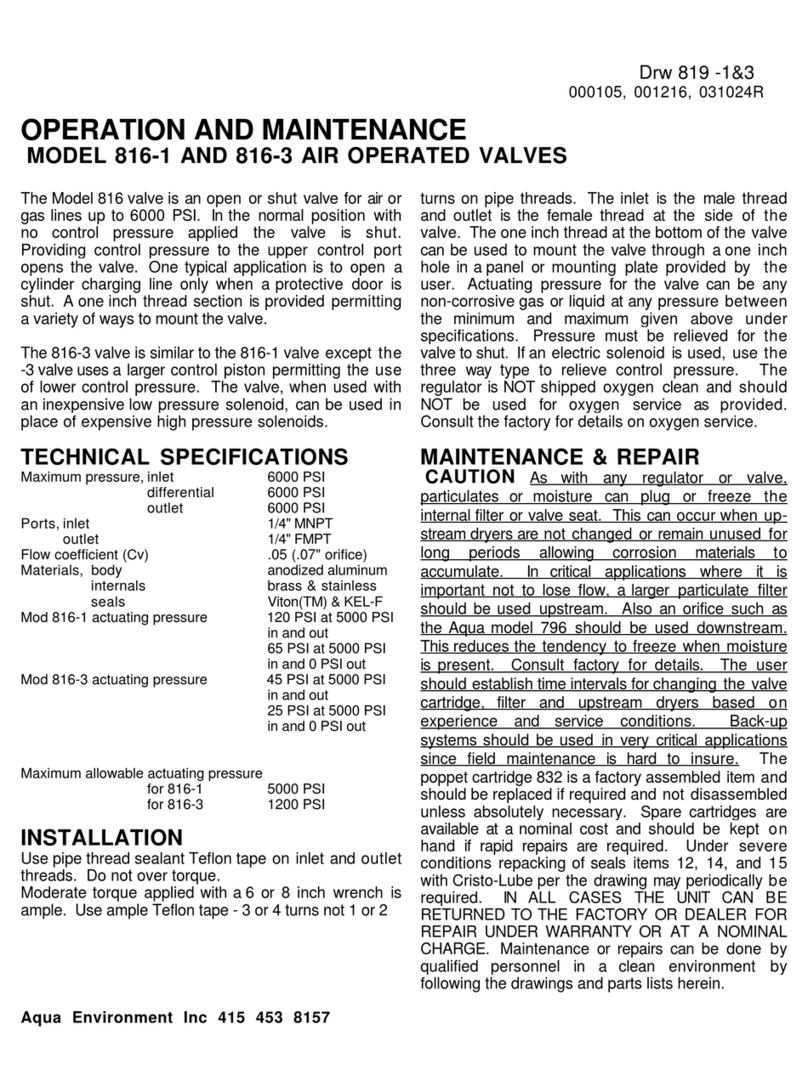
Aqua Environment Inc
Aqua Environment Inc 816-1 Operation and maintenance
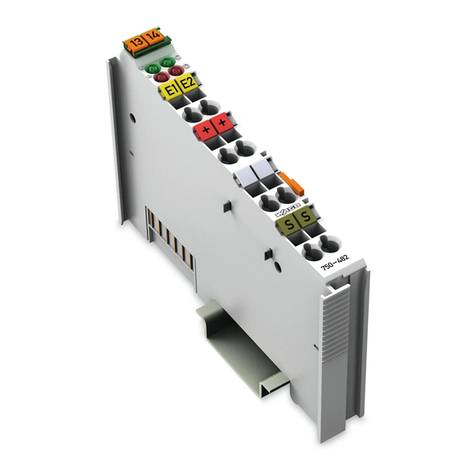
WAGO
WAGO 750-482 manual
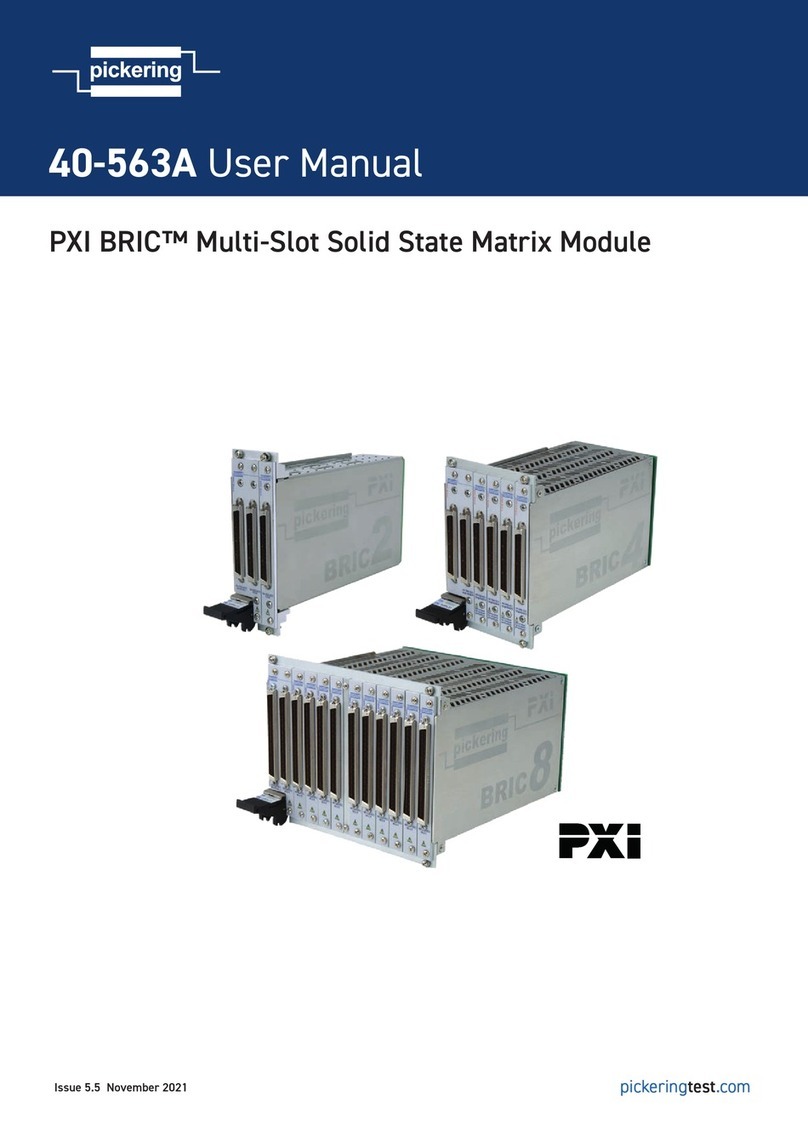
Pickering
Pickering PXI BRIC 40-563A user manual
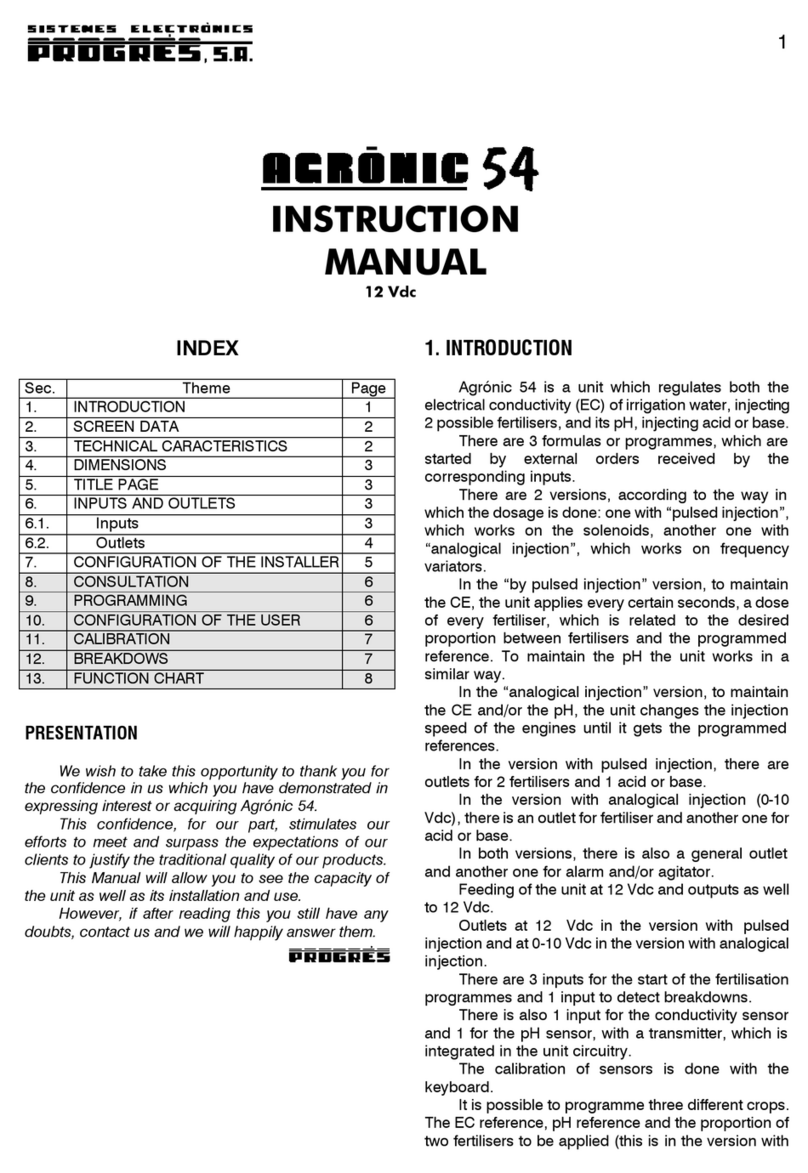
Sistemes Electrònics Progrés s.a.
Sistemes Electrònics Progrés s.a. AGRONIC 54 instruction manual
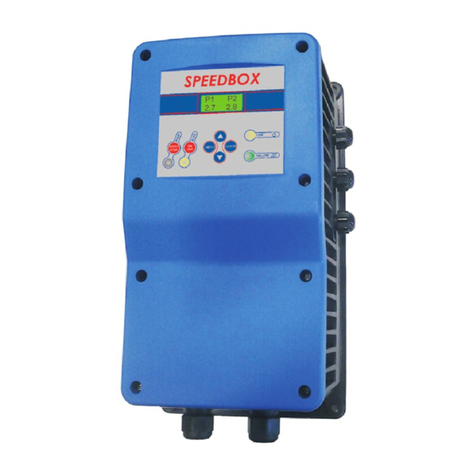
Coelbo
Coelbo Speedbox Installation and operating instructions
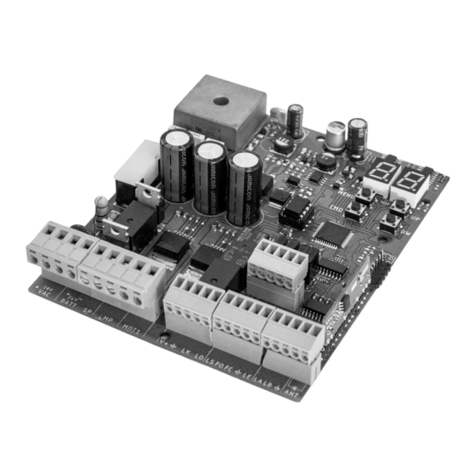
Motorline professional
Motorline professional MC60 User's and installer's manual
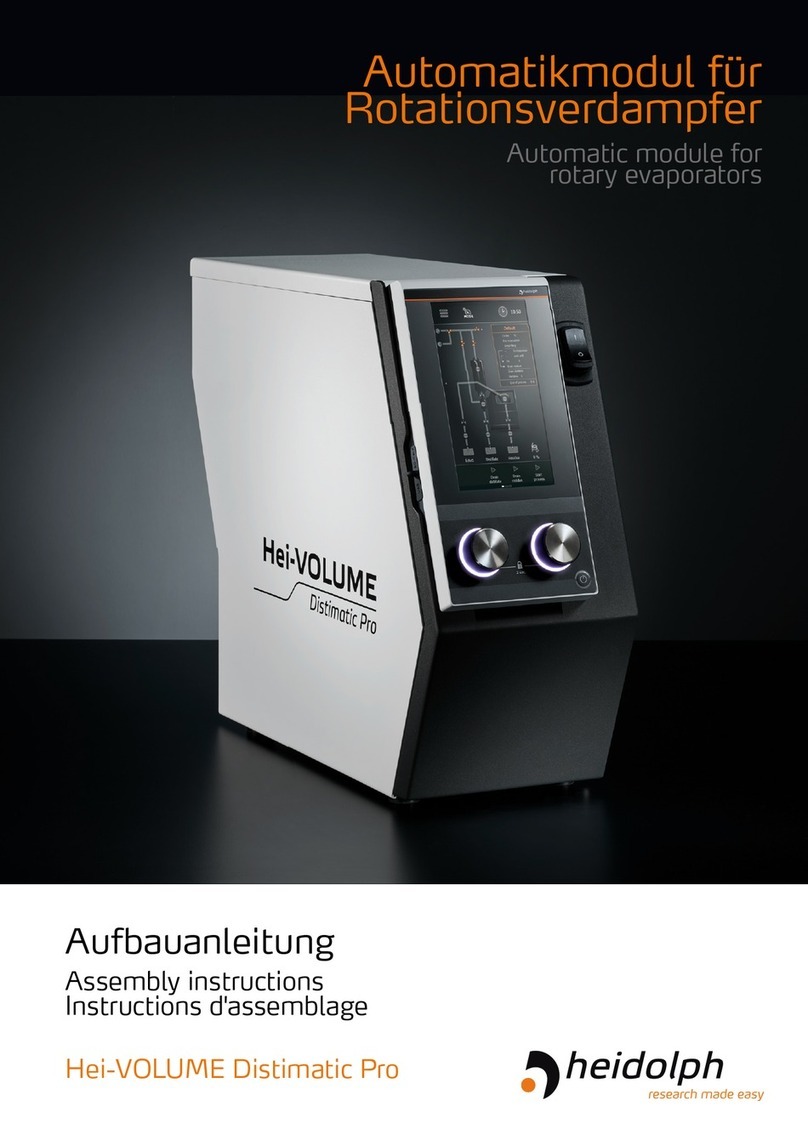
Heidolph
Heidolph Hei-VOLUME Distimatic Pro Assembly instructions
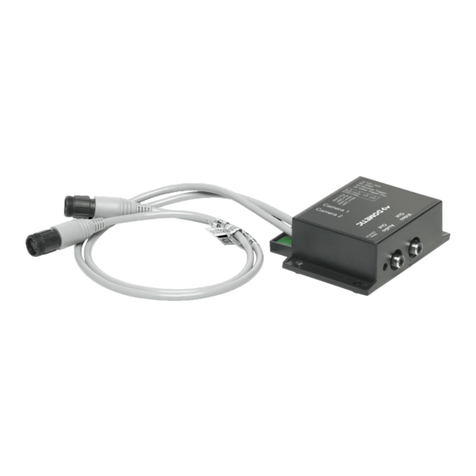
Dometic
Dometic Switch200VTO Installation and operating manual
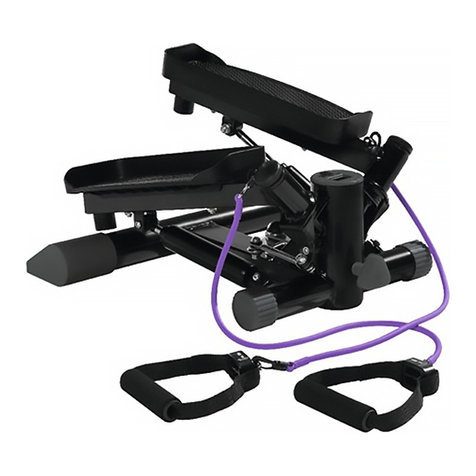
Crivit
Crivit 270017 Instructions for use
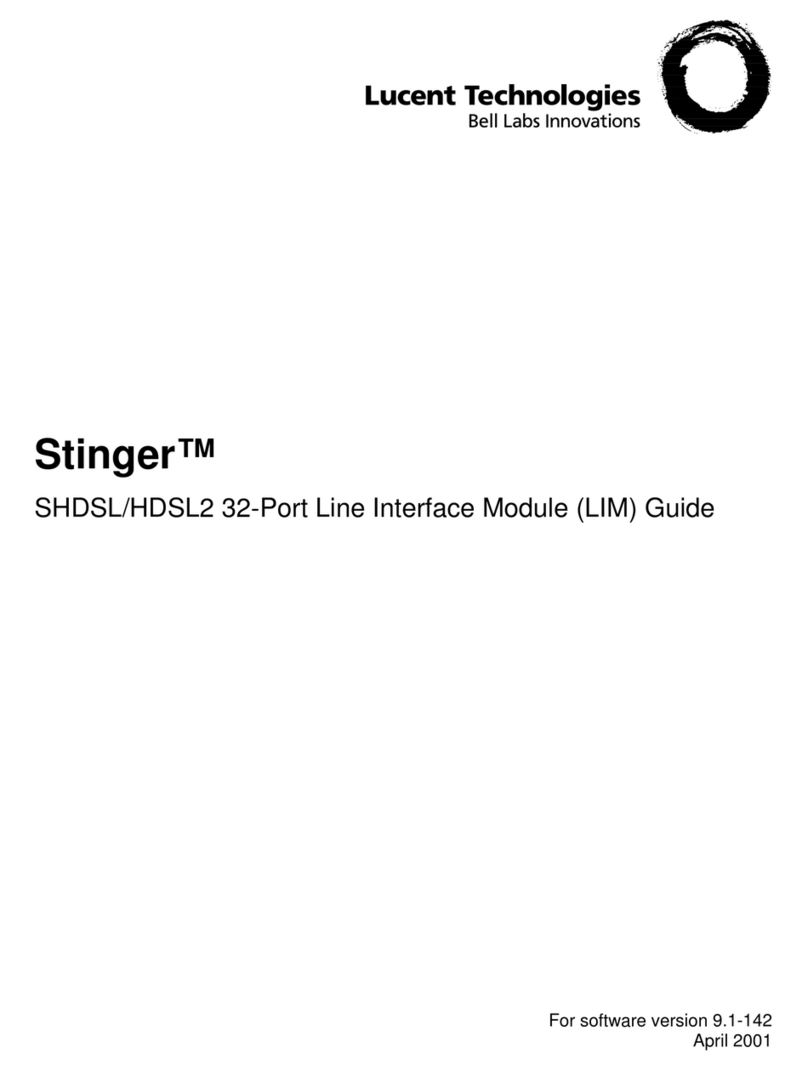
BELL LABS INNOVATIONS
BELL LABS INNOVATIONS Lucent Stinger Series Guide
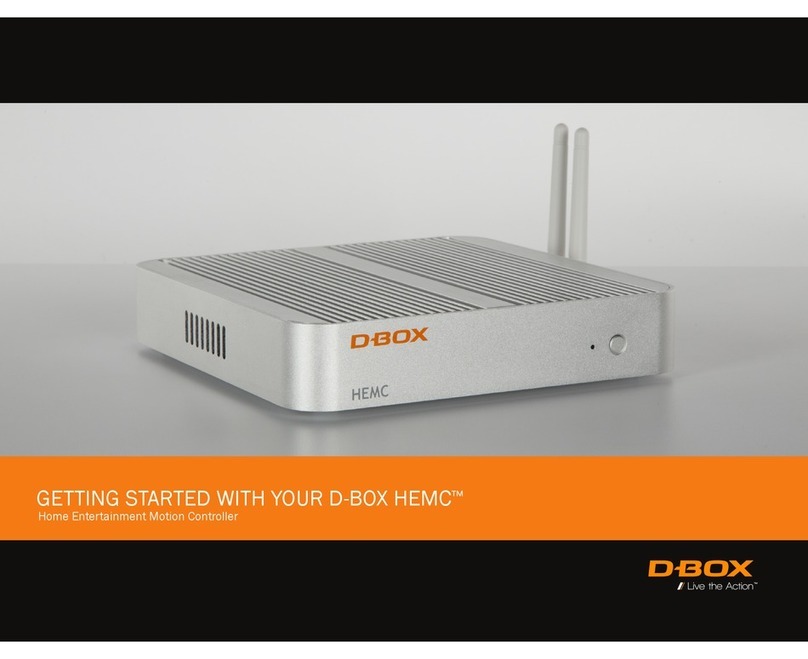
D-Box
D-Box HEMC Getting started
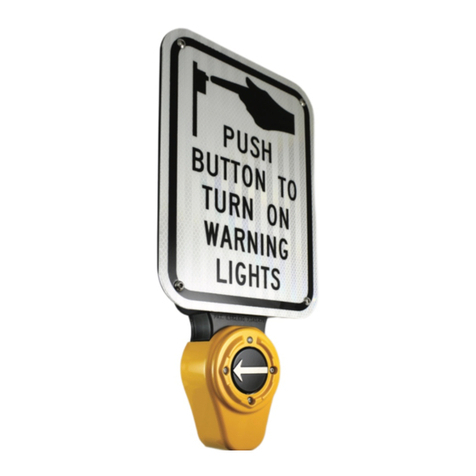
POLARA
POLARA iNX Push Button Station user manual

